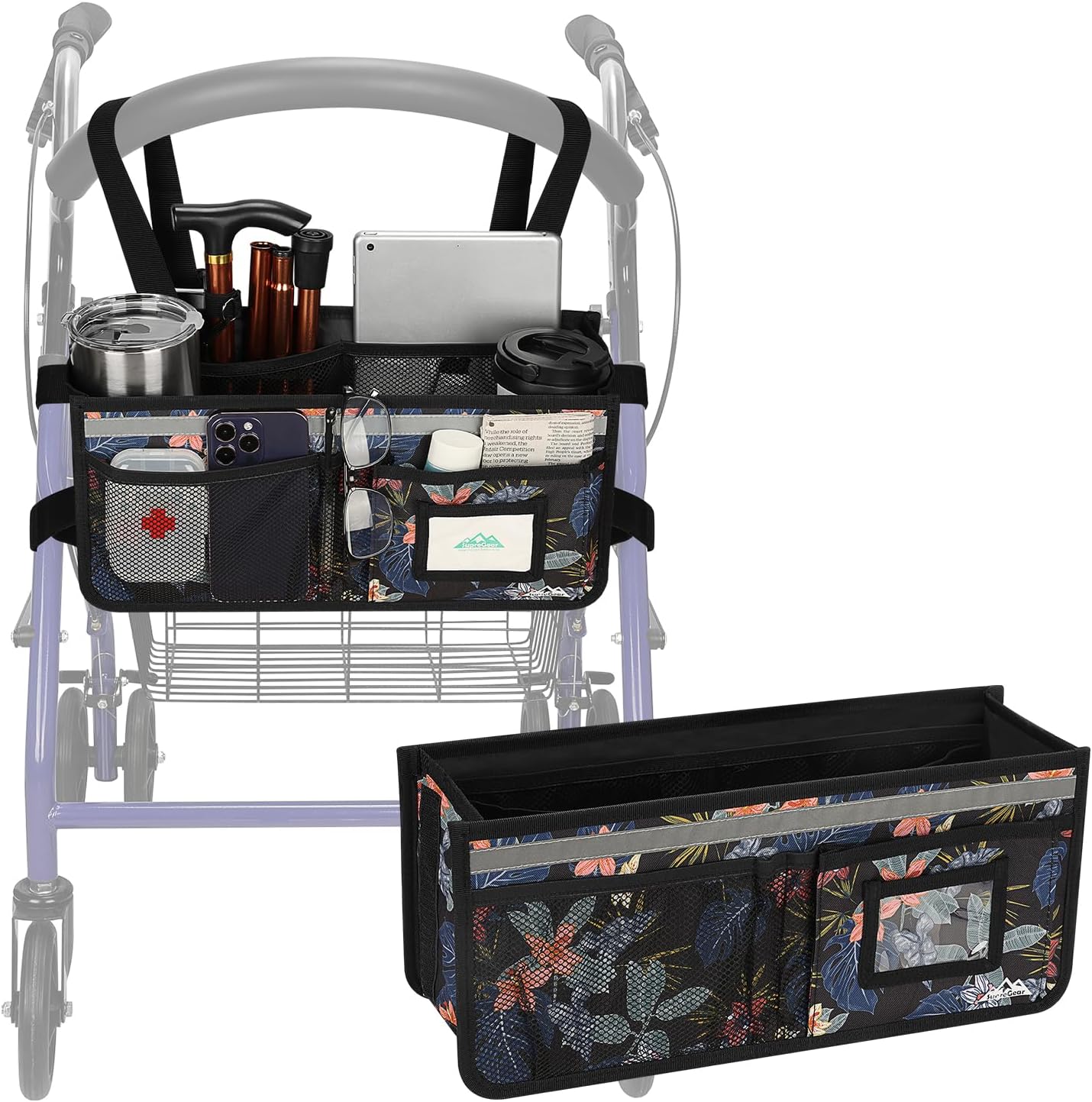Rollator, Walkers, and Canes: Which One Is Right for You?
Mobility aids like rollators, walkers, and canes play a key role in helping individuals maintain their independence and confidence. Whether you’re a caregiver researching options, a rehab patient regaining mobility, or a senior looking for added support, choosing the right device can make all the difference.
At first glance, the sheer variety of mobility aids on the market can feel overwhelming. Should you choose a rollator walker for its versatility and support, a standard walker for stability, or a trusty cane for added balance? To help make the decision easier, this article will break down the advantages, differences, and ideal uses for each option.
What Are Mobility Aids, and Why Are They Important?
Mobility aids provide support to individuals who may face challenges with walking due to aging, injury recovery, surgery, or certain medical conditions. These devices are more than just tools—they can enhance quality of life by providing safety, improving stamina, and even preventing falls.
Now, let’s explore the three most common types of mobility aids and how to determine which one is right for you or your loved one.
Rollator Walker
What Is a Rollator Walker?
A rollator walker, also called rolling walkers, is an advanced mobility device equipped with wheels, brakes, and often a built-in seat. Unlike traditional walkers, rollators glide smoothly across surfaces, eliminating the need to lift the device with each step.
Benefits of a Rollator Walker:
- Smooth Mobility: Thanks to its wheels, a rollator is ideal for individuals with sufficient upper-body strength who want to glide effortlessly.
- Built-In Seat: Tired after a long walk? Many rollator walkers include a seat, making it easier to rest when needed.
- Storage Convenience: Many models come with baskets or pouches for carrying personal items.
Who Should Use It?
Rollator walkers are perfect for those who can walk somewhat independently but need extra support for balance or endurance. They’re especially useful outdoors or when running errands, thanks to their easy maneuverability.
Pro Tip:
Look for models with adjustable handles and reliable brakes for maximum safety and comfort.
Standard Walkers
What Is a Standard Walker?
A traditional walker is a non-wheeled frame that must be lifted for each step, although some models may include two front wheels to assist with movement. Known for their sturdy design, walkers provide unmatched stability for individuals with significant balance or strength concerns.
Benefits of a Walker:
- Maximum Stability: Walkers offer the strongest support of all mobility aids, thanks to their solid frame.
- Adjustable Heights: Most walkers are height-adjustable for a custom fit.
- Customizable Options: You can add accessories such as wheels or gliders to suit your specific needs.
Who Should Use It?
Walkers are best suited for individuals recovering from surgery or injury, or those with weakened leg strength who require constant support while walking.
Pro Tip:
If you’re using a walker indoors, consider attaching non-slip caps to the legs to prevent scratches and improve grip.
Walking Cane
What Is a Walking Cane?
The simplest mobility aid of the three, a walking cane provides balance and light support. Canes are compact, making them an excellent option for individuals who need just a small amount of assistance.
Benefits of a Walking Cane:
- Compact and Lightweight: Easy to carry and maneuver, a cane provides support without being cumbersome.
- Wide Variety: Choose from basic canes, ergonomic designs, or quad canes (with four feet for extra stability).
- Affordable: Canes are often the most budget-friendly mobility aid option.
Who Should Use It?
A walking cane is ideal for those experiencing mild instability or balance issues and still have good overall control of their lower body.
Pro Tip:
Opt for an ergonomic grip to reduce hand strain, and ensure the cane is the correct height (your elbow should be slightly bent when holding it).
How to Choose the Right Mobility Aid
When deciding between a rollator walker, standard walker, or walking cane, consider these factors:
- Level of Support Needed: Evaluate how much assistance is required for balance, strength, and stability.
- Lifestyle: If you’re frequently moving between indoors and outdoors, choose a device that suits both environments.
- Health Conditions: Always consult with a healthcare professional or physical therapist for personalized advice based on your condition and mobility.
- Adjustability and Comfort: Look for features like adjustable handles, ergonomic grips, and lightweight designs for ease of use.
A Community Committed to Keeping You Moving
At the heart of choosing a mobility aid is the goal of keeping you or your loved ones active, safe, and confident. Whether you’re regaining strength after surgery, maintaining independence as a senior, or caring for someone in need, there’s no reason to face this alone. The strength of our community lies in sharing advice, stories, and support to ensure everyone can move forward with dignity—one step at a time.
If you’ve found the perfect mobility aid for your needs, or if you have a story to share, we’d love to hear from you! There’s always a place for you here.
And if you’re still exploring options or need additional guidance, reach out to us. Together, we’ll help you make the right choice.
Stay strong, stay mobile, and stay connected!
